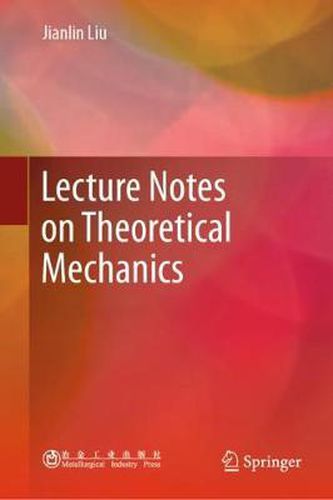Readings Newsletter
Become a Readings Member to make your shopping experience even easier.
Sign in or sign up for free!
You’re not far away from qualifying for FREE standard shipping within Australia
You’ve qualified for FREE standard shipping within Australia
The cart is loading…






This title is printed to order. This book may have been self-published. If so, we cannot guarantee the quality of the content. In the main most books will have gone through the editing process however some may not. We therefore suggest that you be aware of this before ordering this book. If in doubt check either the author or publisher’s details as we are unable to accept any returns unless they are faulty. Please contact us if you have any questions.
This book addresses a range of basic and essential topics, selected from the author’s teaching and research activities, offering a comprehensive guide in three parts: Statics, Kinematics and Kinetics. Chapter 1 briefly discusses the history of classical and modern mechanics, while Chapter 2, presents preliminary knowledge, preparing readers for the subsequent chapters. Chapters 3 to 7 introduce statics, force analysis, simplification of force groups, equilibrium of the general coplanar force group, and the center of the parallel force group.
The Kinematics section (Chapters 8 to 10), covers the motion of a particle, basic motion and planar motion of a rigid body.
Lastly, the Kinetics section (Chapters 11 to 14) explores Newton’s law of motion, theorem of momentum, theorem of angular momentum, and theorem of kinetic energy. With numerous examples from engineering, illustrations, and step-by-step tutorials, the book is suitable for both classroom use and self-study. After completing the course, students will be able to simplify complex engineering structures and perform force and motion analyses on particles and structures, preparing them for further study and research.
The book can be used as a textbook for undergraduate courses on fundamental aspects of theoretical mechanics, such as aerospace, mechanical engineering, petroleum engineering, automotive and civil engineering, as well as material science and engineering.
$9.00 standard shipping within Australia
FREE standard shipping within Australia for orders over $100.00
Express & International shipping calculated at checkout
This title is printed to order. This book may have been self-published. If so, we cannot guarantee the quality of the content. In the main most books will have gone through the editing process however some may not. We therefore suggest that you be aware of this before ordering this book. If in doubt check either the author or publisher’s details as we are unable to accept any returns unless they are faulty. Please contact us if you have any questions.
This book addresses a range of basic and essential topics, selected from the author’s teaching and research activities, offering a comprehensive guide in three parts: Statics, Kinematics and Kinetics. Chapter 1 briefly discusses the history of classical and modern mechanics, while Chapter 2, presents preliminary knowledge, preparing readers for the subsequent chapters. Chapters 3 to 7 introduce statics, force analysis, simplification of force groups, equilibrium of the general coplanar force group, and the center of the parallel force group.
The Kinematics section (Chapters 8 to 10), covers the motion of a particle, basic motion and planar motion of a rigid body.
Lastly, the Kinetics section (Chapters 11 to 14) explores Newton’s law of motion, theorem of momentum, theorem of angular momentum, and theorem of kinetic energy. With numerous examples from engineering, illustrations, and step-by-step tutorials, the book is suitable for both classroom use and self-study. After completing the course, students will be able to simplify complex engineering structures and perform force and motion analyses on particles and structures, preparing them for further study and research.
The book can be used as a textbook for undergraduate courses on fundamental aspects of theoretical mechanics, such as aerospace, mechanical engineering, petroleum engineering, automotive and civil engineering, as well as material science and engineering.